Instead of screaming into the void of Twitter, I bring you a weekly highlight reel of what it’s like going places in Greater Hartford when one is gloriously car-free. These posts are on a slight time delay because nobody needs to know exactly where I am when I am there.
RECREATIONAL
I’ve been asked about what I do when I want to go places — a question that confuses me. It’s not unlike the bizarre expression “lives at home,” a euphemism that destroys me every time I hear it because it captures a very specific mindset, replete with notions about how families operate. I’ve learned that people say they “live at home” instead of “I am a fully grown adult who lives with my self-sufficient parents,” and they really ought to just fess up to their situation, to themselves and others. This evasive terminology makes me snappish, and then I have to fight against it so that mindless small talk doesn’t devolve into the beginning of a long grudge. Why that’s on me, I don’t know. But the second I moved out of my parent’s house as a teen, I stopped thinking of it as home, and always thought that the place I was currently living, unless my name wasn’t on the lease or mortgage, was home.
When I’m asked that question — what about when you want to go somewhere — I bristle just the same. Any time I leave my house I am going somewhere. Do we not consider work commutes going somewhere? If I’m visiting a bookstore in a nearby town have I not gone somewhere?
It’s a question I know less and less how to answer, as it feels obvious. So much of what I write in this series feels obvious to me. It’s like if I asked someone with multiple cars how he eats lunch. What is the question? It feels basic.
Talking about my life in any detail — publicly, with strangers — is uncomfortable. I enjoy privacy. I rarely take or post selfies. I understand there are cultural assumptions about how people spend their time, and personal sharing becomes necessary for clarifying the basic questions regarding how I get around in life without owning a car.
First of all, I don’t travel far often, but when I do, I make it count, jamming the days with experiences because I never assume that I will have a second chance to make something happen. That’s dark. That’s how I’ve always felt, even long before our plague nightmare. I’ve always been in awe of those who have assumed they would wake up the next morning. It’s obvious who wasn’t reading horror novels and about serial killers at age eight.
More practically, even if I could expect to return in a few weeks or months, not having a car makes doing so tricky. I don’t think that’s a bad thing. It’s one of the most simple ways to save money on gas: combine your errands. Well, I’ve been doing some version of that. I am never going to get on a train to visit someone and simply arrive. There will be a list of places I want to visit while I am there and I will make it happen.
I also do not feel a constant need for entertainment and scenery change. This is something that revealed itself in the last few years: the continuum of folks who are boring (they would say that they are bored) versus those not needing constant external stimulation. You’re not going to find me fretting every week about what I am going to do with myself. If you ask me what I did over the weekend and I say “nothing,” I just lied to you, and there’s a good chance that I did so because I can tell you won’t know what to do with my actual answer.
And the other thing: I have various projects going at any time. I spent every single evening, and the better part of some weekend days, writing the first draft of a novel this winter. For that phase, my travel consisted of me commuting from bed to couch, or bed to kitchen to couch. Very exciting. The current phase, which is one of many revisions, requires a little travel, so that the story’s setting is plausible. What I’m trying to say is just because I do not have kids does not mean I am jetting off to the Caribbean every month. . . nor do I want to. I’m not off to Vermont skiing every weekend because I do not ski. That lifestyle has no appeal for me.
Occasionally, a friend will bribe me to leave my house.
On a recent unseasonably warm day, I put myself on a bus and visited a popular recreation area. There are actually three bus stops along the West Hartford Reservoir’s property on Route 4 — by the main entrance, across from Buena Vista Road, and across from Reservoir Avenue. I’m pointing this out because a rando who cornered me in the woods (that’s another story) and claimed he’d been walking the trails for decades had no idea that the bus stops right out front.
On this day, to my absolute fucking delight, another passenger got off at this stop! This was a first for me, and it prevented me from having my usual inside my head rant about how people could be using public transit for fun and games, but aren’t. By prevented, I mean that this rant was delayed until I reached the parking lot. We’ll circle back to that.
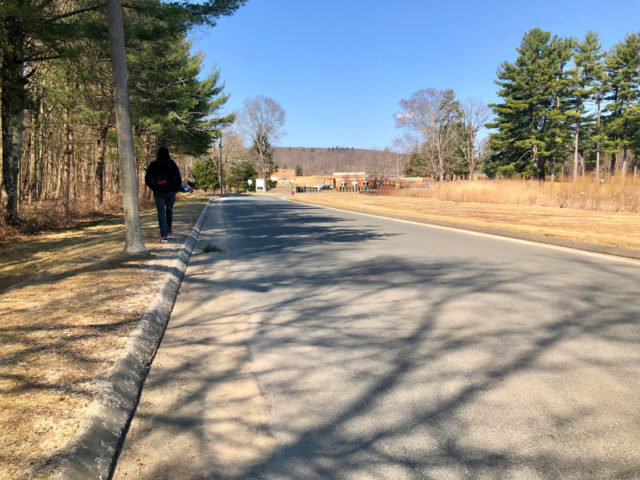
Someone I used to know would mock people who would go here and then talk about it. Because I have had it with privileged gatekeepers, I am definitely going to talk about this. It’s far more relevant than the odd adventure I might have that most people would avoid. Walking or biking the Reservoir is mundane, and yet, I think I see it through a different lens than most using the space.
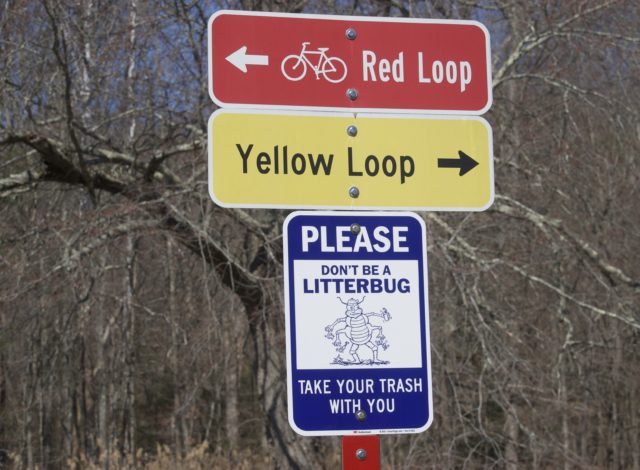
For one, I think about how we create (“we” means 100% not me) these artificial divides when talking about transportation, or anything. How do we build spaces for people who are moving recreationally versus for those commuting? Dare I ask how we consider those who are doing both simultaneously?
Well, let’s take a look.
For pleasure movement, spaces are designed with humans in mind. We can walk or cycle inattentively and encounter few risks. Occasionally, the safety patrol or animal control will drive through, but those drivers understand that they are guests in the space. They are not dominant.
These spaces are wide and smooth. People can walk three or four across, comfortably, and still have room for a cycle lane. This enables people to have conversations while strolling — something I generally don’t care for, but why shouldn’t there be a safe space for this?
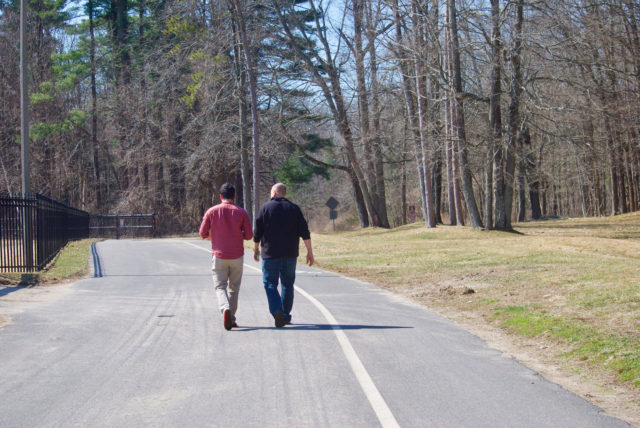
There are more desolate areas, too. Still wide enough for three people to walk next to one another without someone falling into a ditch. You can walk on paths for hours without encountering someone in a land yacht tryin to run you down. It’s kind of amazing. Even though the gravel trails may still allow the walking conversations, it’s rare to be out here and see more than one or two people over several hours.
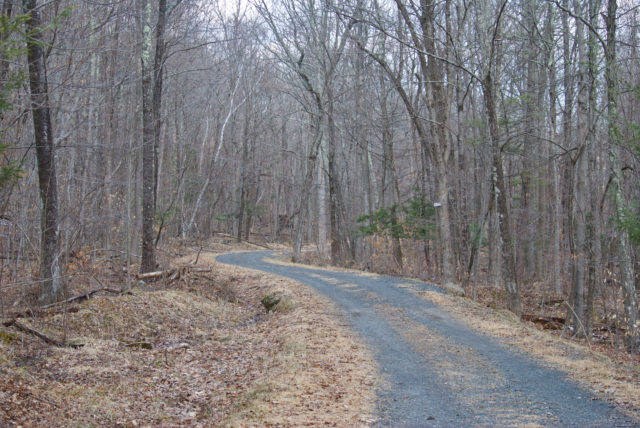
It’s not like you have to travel all that far for this experience either.
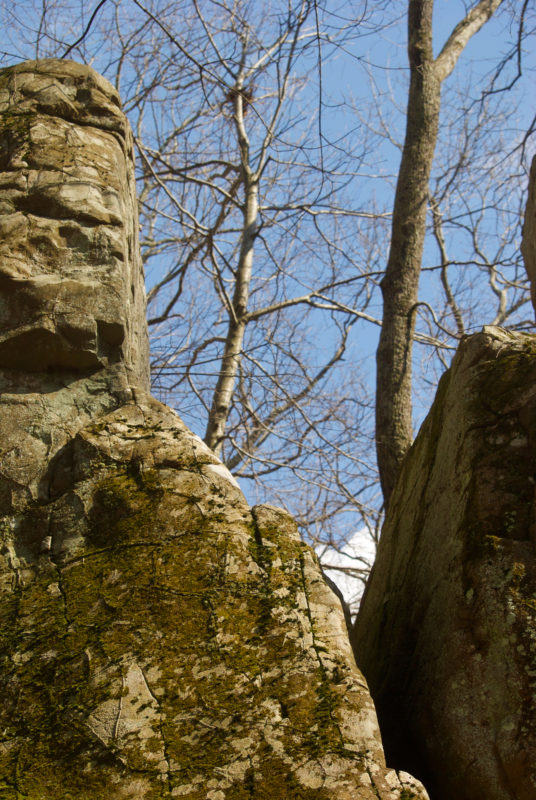
But here’s the thing: there is absolute cognitive dissonance in design. You can have beauty and peace and safety out in the woods, going nowhere. All of this ends at the trash parking lot where people are again at the mercy of those driving, mostly, oversized vehicles. There are no sidewalks. If you are unable to walk on the uneven surface on the edges of the lot, you have to go between parked cars (that may be unparked and reversed toward you at any second) and those being driven in and out. On a warm day like this one, the lot is full. Don’t assume everyone who loves the outdoors is patient and looking out for one another. They’ll smile and greet you when walking around the water, but while still inside of the vehicle, they are in driver mode — often aggressive, often careless. And why not? There are no real speed calming features.
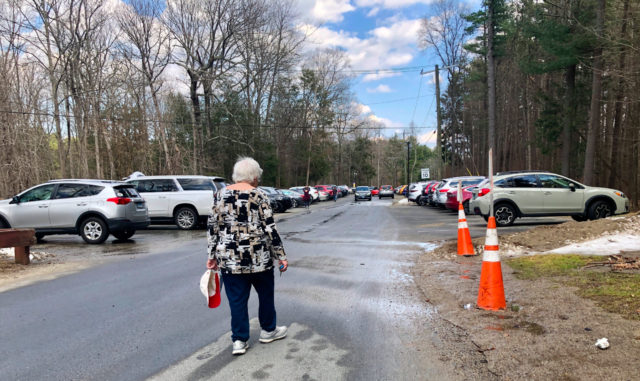
If you make it out of the large parking lot without getting hit, congrats. Now, you have to get to the bus stop. That’s easy if you are headed west, but chances are, you’re not. That means crossing the roadway.
You can press a button. Don’t be fooled. It does not create an exclusive pedestrian phase. It gives the green light to those leaving the water plant, and what are the odds people are looking right before making turns?
There is no marked crosswalk. There are no sidewalks. You go from a walking paradise to a damn death road. It’s marked as 40 MPH. That’s too fast and the design tells drivers to go faster.
Make no mistake — a death road is what it is. I’ve looked at enough sites where pedestrians have been killed, and often they appear like this: overly wide road with obnoxiously high speed limit and no sidewalks. A fool might believe that the narrow painted area on the side is ideal for cyclists and pedestrians, and if this were magic paint that repelled vehicles, then they would be correct. However, in realityland, paint ain’t shit.
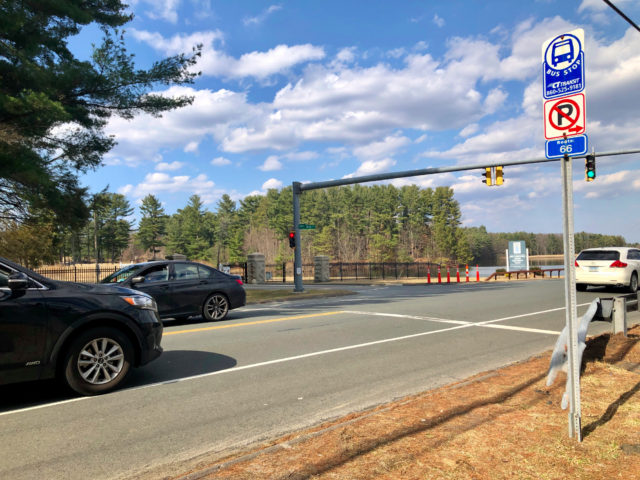
How do I know? I had awhile to observe while waiting for the infrequent bus to come get me. I watched people drive fast and recklessly, using the shoulder to pass on the right when the line of vehicles turning left into the Reservoir driveway upset them. By the way, about 75% or more of the vehicles I could see into (that did not have dark tints) had only a driver. Again, miss me with the grousing about gas prices if you haven’t taken up carpooling yet.
People bike and walk in that shoulder. Every time I see it I get chills. But West Hartford has decided it does not value human life enough to install sidewalks here, so what can be done?
You might be thinking: that’s a big ask to make, all that pedestrian infrastructure just so people can come in from out of town for recreation. Except, here’s the thing– there are houses across the street from the Reservoir. Next to the bus shelter is a path that connects to those houses. So close, yet so far — whether residents are crossing the road for walking trails or simply to get to that bus stop so they can get to UConn Health or shops in Farmington. How annoying to be served by a bus, yet be done a major disservice by half-assed road design.
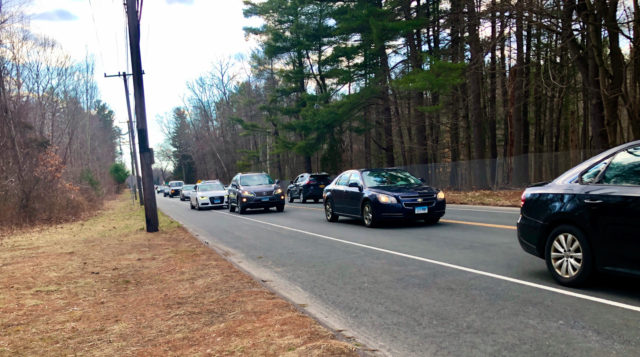
The bus shelter itself is deceptive. It looks posh compared to the shelters closest to my house, the ones on Park Street at Pope Park and Pope Commons that are installed wrong and covered in graffiti.
What’s deceptive about this?
There’s a roof, walls. Protection from wind, rain.
Yes, but. . .
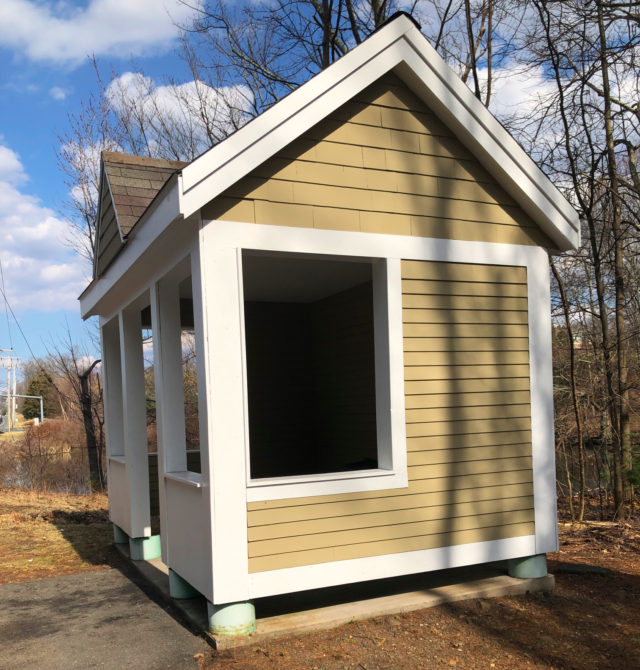
Inside there is no bench.
The bus, at its most frequent, comes through here every 30 minutes. GPS is screwy in this area, so you can’t rely on the transit app to tell you what the wait time is.
Somedays, the bus goes through only once an hour. It does not run on Sundays.
There is, however, a garbage can and a piece car debris, because of course an area for pedestrians is going to be infiltrated by car culture.
This may or may not have been a place where I left a written opinion about the missing bench. That message was scrubbed. Still no bench.
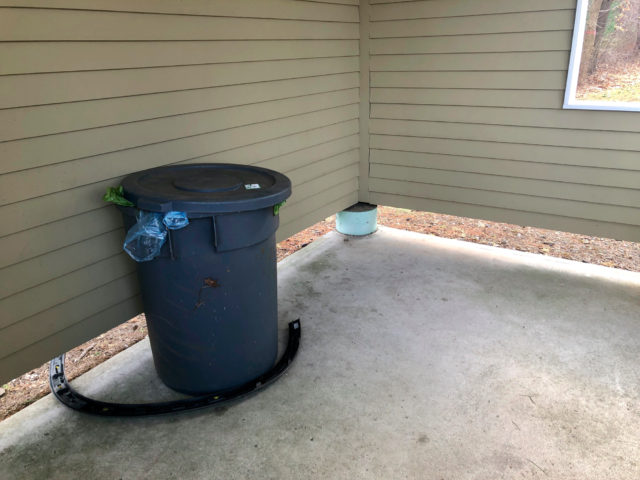
So, that means leaning or pacing around.
I got to watch as this person (pic below) spent 5-10 minutes attempting to cross the street to reach the other bus stop. Again: there is no pedestrian phase. There is no marked crosswalk. This was harrowing to watch, especially as people kept driving in the shoulder. My phone was loaded with pics and videos because I stood there aggressively recording drivers in the time it took for this other person to cross the road. When people saw they were being recorded, they moved back into their lane.
I had a calming trip in the woods. All that got flushed down the toilet before I got back on the bus.
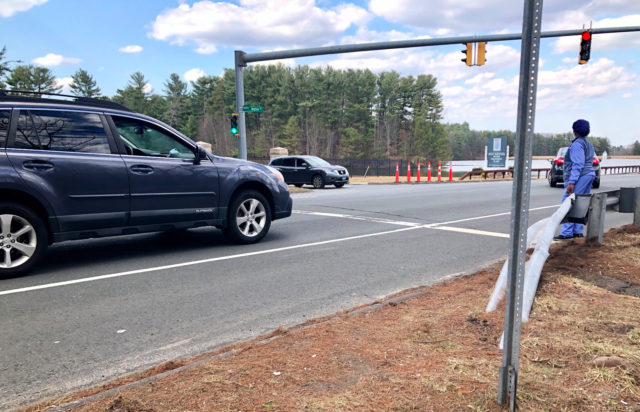
COVID CONVENIENCE
I can’t be the only person disgusted by businesses that sealed off their water fountains and public restrooms early in the pandemic, yet never reopened them after we learned more about virus transmission. I am aware I have written about this before. It’s ongoing and I’m surprised every time I see places continuing to bar patrons from the most basic necessities.
Closing water fountains? Is this because equipment is broken and a company decided to cover the fountains in plastic rather than fix them? Is this because they have no cleaning staff? They don’t want to give away water when they can force people to buy it? What exactly is happening here?
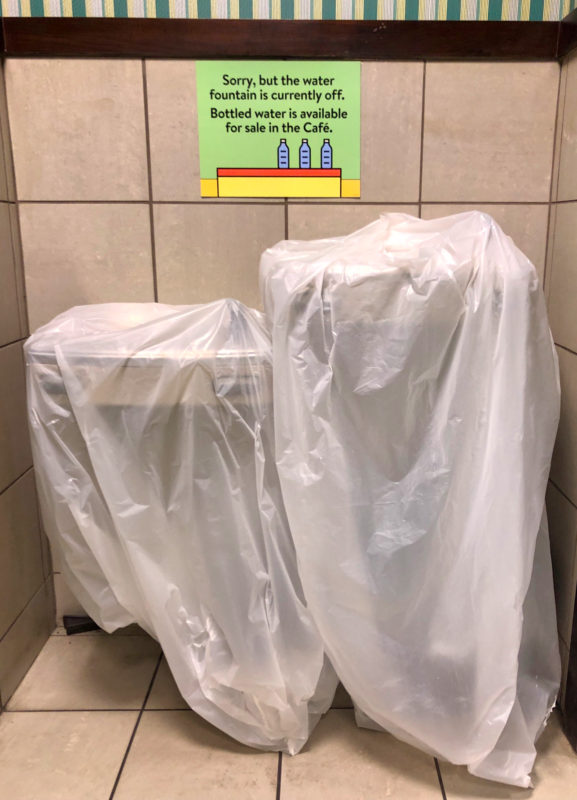
It’s gross. How is it acceptable for a business to say masks are now optional, but continue to keep their restroom closed? It’s not logical. You have people sitting unmasked at tables, and that’s fine, but I can’t use a single stall restroom while masked? At a place that sells food and beverages?! You are literally willing to make me pee, but not give me a place to do it.
When I was a tot, I worked in retail where bathrooms were locked. We had a policy of letting customers in, though this required staff to punch in a code. Sometimes there was miscommunication about whether or not someone responded to a request.
Once while I was on shift, a customer either did not ask or had waited too long, and shat in the hallway where the bathrooms were.
Years later, this store remains open, and I am pleased that they have in the meantime removed the idiotic code locks so people can simply let themselves into the restrooms. I don’t know if they realized how unfriendly this was, or if they decided that cleaning up human waste was worse than the occasional shoplifted t-shirt.
When I get arrested, I want it to be for something epic. Public urination is not epic. Yet, that’s what people are asking for when they don’t allow the public the dignity of using indoor plumbing.
Who are they really trying to keep from using their restrooms?
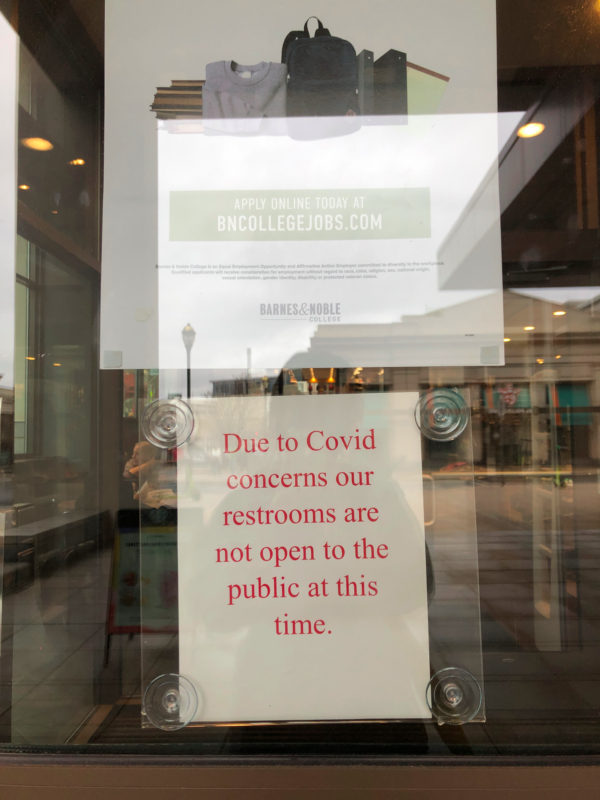
DISPOSABLE CULTURE
Related: If you are thinking of moving a particular population that relies on bicycle, bus, or their own feet to get around, do you look at locations conducive to that, or do you shove them in a hellscape without sidewalks or crosswalks, where there is an infrequent bus?
Since we’re talking about Hartford, we know the answer is to passive-aggressively move people from a homeless shelter that is easily walkable to downtown with decent pedestrian infrastructure, to the South Meadows where everything was built for those driving on and off the Interstate. How well are clients being served by this move?
These decisions are not without consequences.
Those consequences are sometimes deadly.
When the poor are not placed in harm’s way — that is, given housing in a place where they are likely to be struck by a driver — they are arrested for requesting money or they are given a hard time about relieving themselves with dignity.
THE TWEETS THAT SUSTAIN ME
Enjoying unapologetic tweets that don’t even try for nuance because they understand what twitter is for. Want nuance? Find a blog.
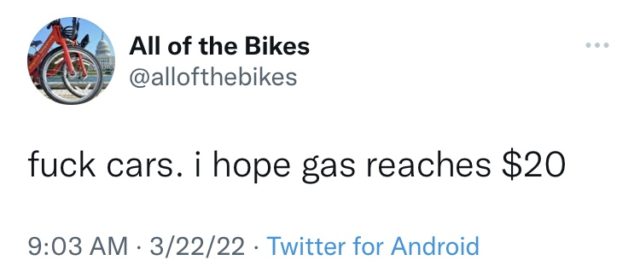
It’s me. I’m bike twitter.
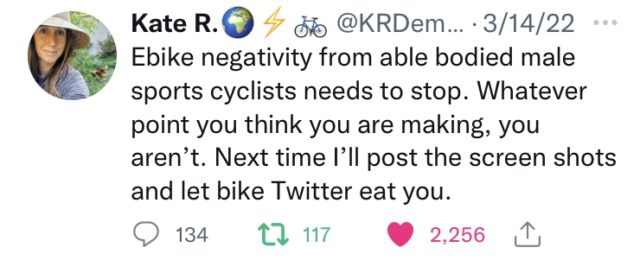
Okay class, repeat after me: traffic safety is a shared responsibility:
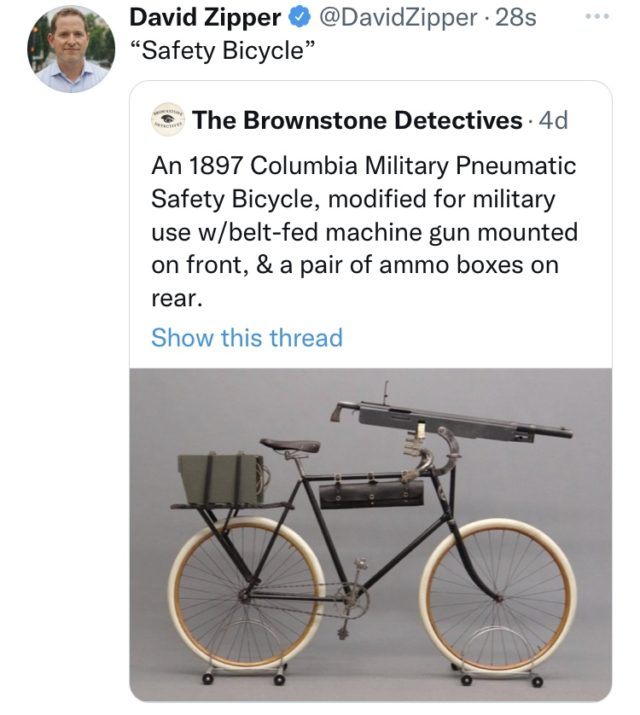
WHAT NEXT
- Could West Hartford residents suggest that the stroad of Farmington Avenue/Route 4 be changed into something other than a horror show. Paint and signs alone do not protect. Cops are never the answer.
- Could the MDC do anything to make their parking lot a less aggressive space to walk or cycle through?
- The offer still stands: if you want company for a trial run on a city bus in Greater Hartford, contact me.
Car-Free Diaries: Week 16
Instead of screaming into the void of Twitter, I bring you a weekly highlight reel of what it’s like going places in Greater Hartford when one is gloriously car-free. These posts are on a slight time delay because nobody needs to know exactly where I am when I am there.
RECREATIONAL
I’ve been asked about what I do when I want to go places — a question that confuses me. It’s not unlike the bizarre expression “lives at home,” a euphemism that destroys me every time I hear it because it captures a very specific mindset, replete with notions about how families operate. I’ve learned that people say they “live at home” instead of “I am a fully grown adult who lives with my self-sufficient parents,” and they really ought to just fess up to their situation, to themselves and others. This evasive terminology makes me snappish, and then I have to fight against it so that mindless small talk doesn’t devolve into the beginning of a long grudge. Why that’s on me, I don’t know. But the second I moved out of my parent’s house as a teen, I stopped thinking of it as home, and always thought that the place I was currently living, unless my name wasn’t on the lease or mortgage, was home.
When I’m asked that question — what about when you want to go somewhere — I bristle just the same. Any time I leave my house I am going somewhere. Do we not consider work commutes going somewhere? If I’m visiting a bookstore in a nearby town have I not gone somewhere?
It’s a question I know less and less how to answer, as it feels obvious. So much of what I write in this series feels obvious to me. It’s like if I asked someone with multiple cars how he eats lunch. What is the question? It feels basic.
Talking about my life in any detail — publicly, with strangers — is uncomfortable. I enjoy privacy. I rarely take or post selfies. I understand there are cultural assumptions about how people spend their time, and personal sharing becomes necessary for clarifying the basic questions regarding how I get around in life without owning a car.
First of all, I don’t travel far often, but when I do, I make it count, jamming the days with experiences because I never assume that I will have a second chance to make something happen. That’s dark. That’s how I’ve always felt, even long before our plague nightmare. I’ve always been in awe of those who have assumed they would wake up the next morning. It’s obvious who wasn’t reading horror novels and about serial killers at age eight.
More practically, even if I could expect to return in a few weeks or months, not having a car makes doing so tricky. I don’t think that’s a bad thing. It’s one of the most simple ways to save money on gas: combine your errands. Well, I’ve been doing some version of that. I am never going to get on a train to visit someone and simply arrive. There will be a list of places I want to visit while I am there and I will make it happen.
I also do not feel a constant need for entertainment and scenery change. This is something that revealed itself in the last few years: the continuum of folks who are boring (they would say that they are bored) versus those not needing constant external stimulation. You’re not going to find me fretting every week about what I am going to do with myself. If you ask me what I did over the weekend and I say “nothing,” I just lied to you, and there’s a good chance that I did so because I can tell you won’t know what to do with my actual answer.
And the other thing: I have various projects going at any time. I spent every single evening, and the better part of some weekend days, writing the first draft of a novel this winter. For that phase, my travel consisted of me commuting from bed to couch, or bed to kitchen to couch. Very exciting. The current phase, which is one of many revisions, requires a little travel, so that the story’s setting is plausible. What I’m trying to say is just because I do not have kids does not mean I am jetting off to the Caribbean every month. . . nor do I want to. I’m not off to Vermont skiing every weekend because I do not ski. That lifestyle has no appeal for me.
Occasionally, a friend will bribe me to leave my house.
On a recent unseasonably warm day, I put myself on a bus and visited a popular recreation area. There are actually three bus stops along the West Hartford Reservoir’s property on Route 4 — by the main entrance, across from Buena Vista Road, and across from Reservoir Avenue. I’m pointing this out because a rando who cornered me in the woods (that’s another story) and claimed he’d been walking the trails for decades had no idea that the bus stops right out front.
On this day, to my absolute fucking delight, another passenger got off at this stop! This was a first for me, and it prevented me from having my usual inside my head rant about how people could be using public transit for fun and games, but aren’t. By prevented, I mean that this rant was delayed until I reached the parking lot. We’ll circle back to that.
Someone I used to know would mock people who would go here and then talk about it. Because I have had it with privileged gatekeepers, I am definitely going to talk about this. It’s far more relevant than the odd adventure I might have that most people would avoid. Walking or biking the Reservoir is mundane, and yet, I think I see it through a different lens than most using the space.
For one, I think about how we create (“we” means 100% not me) these artificial divides when talking about transportation, or anything. How do we build spaces for people who are moving recreationally versus for those commuting? Dare I ask how we consider those who are doing both simultaneously?
Well, let’s take a look.
For pleasure movement, spaces are designed with humans in mind. We can walk or cycle inattentively and encounter few risks. Occasionally, the safety patrol or animal control will drive through, but those drivers understand that they are guests in the space. They are not dominant.
These spaces are wide and smooth. People can walk three or four across, comfortably, and still have room for a cycle lane. This enables people to have conversations while strolling — something I generally don’t care for, but why shouldn’t there be a safe space for this?
There are more desolate areas, too. Still wide enough for three people to walk next to one another without someone falling into a ditch. You can walk on paths for hours without encountering someone in a land yacht tryin to run you down. It’s kind of amazing. Even though the gravel trails may still allow the walking conversations, it’s rare to be out here and see more than one or two people over several hours.
It’s not like you have to travel all that far for this experience either.
But here’s the thing: there is absolute cognitive dissonance in design. You can have beauty and peace and safety out in the woods, going nowhere. All of this ends at the trash parking lot where people are again at the mercy of those driving, mostly, oversized vehicles. There are no sidewalks. If you are unable to walk on the uneven surface on the edges of the lot, you have to go between parked cars (that may be unparked and reversed toward you at any second) and those being driven in and out. On a warm day like this one, the lot is full. Don’t assume everyone who loves the outdoors is patient and looking out for one another. They’ll smile and greet you when walking around the water, but while still inside of the vehicle, they are in driver mode — often aggressive, often careless. And why not? There are no real speed calming features.
If you make it out of the large parking lot without getting hit, congrats. Now, you have to get to the bus stop. That’s easy if you are headed west, but chances are, you’re not. That means crossing the roadway.
You can press a button. Don’t be fooled. It does not create an exclusive pedestrian phase. It gives the green light to those leaving the water plant, and what are the odds people are looking right before making turns?
There is no marked crosswalk. There are no sidewalks. You go from a walking paradise to a damn death road. It’s marked as 40 MPH. That’s too fast and the design tells drivers to go faster.
Make no mistake — a death road is what it is. I’ve looked at enough sites where pedestrians have been killed, and often they appear like this: overly wide road with obnoxiously high speed limit and no sidewalks. A fool might believe that the narrow painted area on the side is ideal for cyclists and pedestrians, and if this were magic paint that repelled vehicles, then they would be correct. However, in realityland, paint ain’t shit.
How do I know? I had awhile to observe while waiting for the infrequent bus to come get me. I watched people drive fast and recklessly, using the shoulder to pass on the right when the line of vehicles turning left into the Reservoir driveway upset them. By the way, about 75% or more of the vehicles I could see into (that did not have dark tints) had only a driver. Again, miss me with the grousing about gas prices if you haven’t taken up carpooling yet.
People bike and walk in that shoulder. Every time I see it I get chills. But West Hartford has decided it does not value human life enough to install sidewalks here, so what can be done?
You might be thinking: that’s a big ask to make, all that pedestrian infrastructure just so people can come in from out of town for recreation. Except, here’s the thing– there are houses across the street from the Reservoir. Next to the bus shelter is a path that connects to those houses. So close, yet so far — whether residents are crossing the road for walking trails or simply to get to that bus stop so they can get to UConn Health or shops in Farmington. How annoying to be served by a bus, yet be done a major disservice by half-assed road design.
The bus shelter itself is deceptive. It looks posh compared to the shelters closest to my house, the ones on Park Street at Pope Park and Pope Commons that are installed wrong and covered in graffiti.
What’s deceptive about this?
There’s a roof, walls. Protection from wind, rain.
Yes, but. . .
Inside there is no bench.
The bus, at its most frequent, comes through here every 30 minutes. GPS is screwy in this area, so you can’t rely on the transit app to tell you what the wait time is.
Somedays, the bus goes through only once an hour. It does not run on Sundays.
There is, however, a garbage can and a piece car debris, because of course an area for pedestrians is going to be infiltrated by car culture.
This may or may not have been a place where I left a written opinion about the missing bench. That message was scrubbed. Still no bench.
So, that means leaning or pacing around.
I got to watch as this person (pic below) spent 5-10 minutes attempting to cross the street to reach the other bus stop. Again: there is no pedestrian phase. There is no marked crosswalk. This was harrowing to watch, especially as people kept driving in the shoulder. My phone was loaded with pics and videos because I stood there aggressively recording drivers in the time it took for this other person to cross the road. When people saw they were being recorded, they moved back into their lane.
I had a calming trip in the woods. All that got flushed down the toilet before I got back on the bus.
COVID CONVENIENCE
I can’t be the only person disgusted by businesses that sealed off their water fountains and public restrooms early in the pandemic, yet never reopened them after we learned more about virus transmission. I am aware I have written about this before. It’s ongoing and I’m surprised every time I see places continuing to bar patrons from the most basic necessities.
Closing water fountains? Is this because equipment is broken and a company decided to cover the fountains in plastic rather than fix them? Is this because they have no cleaning staff? They don’t want to give away water when they can force people to buy it? What exactly is happening here?
It’s gross. How is it acceptable for a business to say masks are now optional, but continue to keep their restroom closed? It’s not logical. You have people sitting unmasked at tables, and that’s fine, but I can’t use a single stall restroom while masked? At a place that sells food and beverages?! You are literally willing to make me pee, but not give me a place to do it.
When I was a tot, I worked in retail where bathrooms were locked. We had a policy of letting customers in, though this required staff to punch in a code. Sometimes there was miscommunication about whether or not someone responded to a request.
Once while I was on shift, a customer either did not ask or had waited too long, and shat in the hallway where the bathrooms were.
Years later, this store remains open, and I am pleased that they have in the meantime removed the idiotic code locks so people can simply let themselves into the restrooms. I don’t know if they realized how unfriendly this was, or if they decided that cleaning up human waste was worse than the occasional shoplifted t-shirt.
When I get arrested, I want it to be for something epic. Public urination is not epic. Yet, that’s what people are asking for when they don’t allow the public the dignity of using indoor plumbing.
Who are they really trying to keep from using their restrooms?
DISPOSABLE CULTURE
Related: If you are thinking of moving a particular population that relies on bicycle, bus, or their own feet to get around, do you look at locations conducive to that, or do you shove them in a hellscape without sidewalks or crosswalks, where there is an infrequent bus?
Since we’re talking about Hartford, we know the answer is to passive-aggressively move people from a homeless shelter that is easily walkable to downtown with decent pedestrian infrastructure, to the South Meadows where everything was built for those driving on and off the Interstate. How well are clients being served by this move?
These decisions are not without consequences.
Those consequences are sometimes deadly.
When the poor are not placed in harm’s way — that is, given housing in a place where they are likely to be struck by a driver — they are arrested for requesting money or they are given a hard time about relieving themselves with dignity.
THE TWEETS THAT SUSTAIN ME
Enjoying unapologetic tweets that don’t even try for nuance because they understand what twitter is for. Want nuance? Find a blog.
It’s me. I’m bike twitter.
Okay class, repeat after me: traffic safety is a shared responsibility:
WHAT NEXT
Related Posts
Turnaround Plan for Milner? Not All On Board
Rocks on Union Place
Al’s Fresco